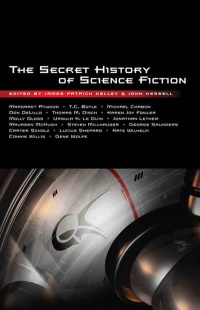 My second experience with Vernor Vinge goes back back to one of his earlier novels, The Peace War from 1984. While I didn’t like it quite as much as the other book of his I’ve read, it was nevertheless a fine novel with intriguing ideas, believable characters, and an engaging plot.
My second experience with Vernor Vinge goes back back to one of his earlier novels, The Peace War from 1984. While I didn’t like it quite as much as the other book of his I’ve read, it was nevertheless a fine novel with intriguing ideas, believable characters, and an engaging plot.
The Peace War weaves scientific, social, and political elements together into a story that makes us think about not only of the possibilities of the future, but also about the realities of our current world. One of the major themes is about the trade-offs between freedom and security, surely an age-old problem, and one getting a lot of attention these days in the midst of the “War on Terror.” Another theme is the power of a single scientific breakthrough to totally change the world almost overnight, for better or worse. Added to these are various subplots concerning character issues such as loyalty and betrayal, revenge, lost love, and so forth, that really help flesh out the story.
The setting is the mid-21st century and a world that is more or less at peace, with a single worldwide “government” known as the Peace Authority controlling it. The roots of this world are to be found 50 years earlier in a scientific discovery at Lawrence Livermore National Laboratory — a kind of forcefield that comes to be known as a “bobble.” A bobble is a spherical field, anywhere from a few centimeters to many kilometers in diameter (depending on the power supply creating it), that is completely impervious and indestructible. Nothing can pass in or out, not even light, and they last indefinitely once established (or so everyone thinks at the start of the book). Some ambitious Livermore administrators saw an opportunity to put their political ideals into practice and seized the moment, using their new technology to form bobbles around military bases, ships, aircraft, nuclear launch sites, and other military assets before the world knew what was happening. At the same time they used other assets at their disposal (including biological weapons) to wage a bloody worldwide war, greatly reducing the population. Their goal was to eliminate the chaos of a world in which it was becoming more and more possible for some small rogue nation to get nukes and start World War III; they decided to take control of the world, backed up with bobble power, against which there was no defense. Eventually the Peace Authority emerged from the conflict as the winner, enforcing a worldwide peace, allowing smaller governmental entities to exist under them, and generally not interfering too much — but still making it clear to all that they were the planet’s masters, and striking swiftly at any attempted opposition.
Fifty years down the road, Earth is a rather peaceful place. As long as people don’t try to build large power sources or pursue biological science — the Peace Authority’s two main restrictions — they are pretty much left alone. The Peace War, as it has come to be called, was severe, but left enough of the world intact so that it doesn’t seem like a post-apocalypse atmosphere. In some ways, humanity has been knocked back somewhat technologically, but in other ways are quite advanced. However, there are no more universities, and no formalized scientific establishment, but there is a loose confederation of amateur scientists and inventors called Tinkers, who develop technology under the radar, especially electronics technology. These Tinkers are becoming a force to be reckoned with, and soon the Peace Authority will face its first serious challenge in a half century — especially considering that the Tinkers have on their side the very man who originally discovered the bobbles. After all this time, people are about to discover there is more to the bobbles than anyone knew.
Vinge works in computer science and mathematics and, as one might expect, that expertise comes across in his writing. The science here is solid, and his presentation of electronics, artificial intelligence, and telecommunications seems very believable. The characters are fairly strong as well, although some of them should have been explored a little more deeply. Vinge constructs a plausible future world with a realistic social fabric backing it up, populated with real people with real human concerns.
The back cover blurb calls this “a novel of ultimate tyranny and the war to end it,” and that’s a good enough description. However, if there was one real weakness in this book, it was the fact that Vinge left the main debate in the background and largely glossed over: the question of whether people really would view the situation as “ultimate tyranny.” Many of the main characters seemed naturally inclined toward my own view, best summed up by Ben Franklin when he said, “He who sacrifices freedom for security deserves neither.” In fact, that seemed to be the majority view outside of the Peace Authority itself. However, the fact remains that the Authority did actually provide stabilization and a peaceful world, and I would have expected some characters, and a sizable portion of the population, to support that. In short, I would have expected a vigorous debate on the issue, but this aspect wasn’t developed much, and it just seemed too easy that everyone agreed on the matter. Still, the debate is implicit in the novel and it’s impossible for the reader not to recognize it, so maybe Vinge thought it didn’t need to be spelled out in detail.
At any rate, I recommend this one. It has a lot going for it, and has enough depth to keep you thinking for a while.














